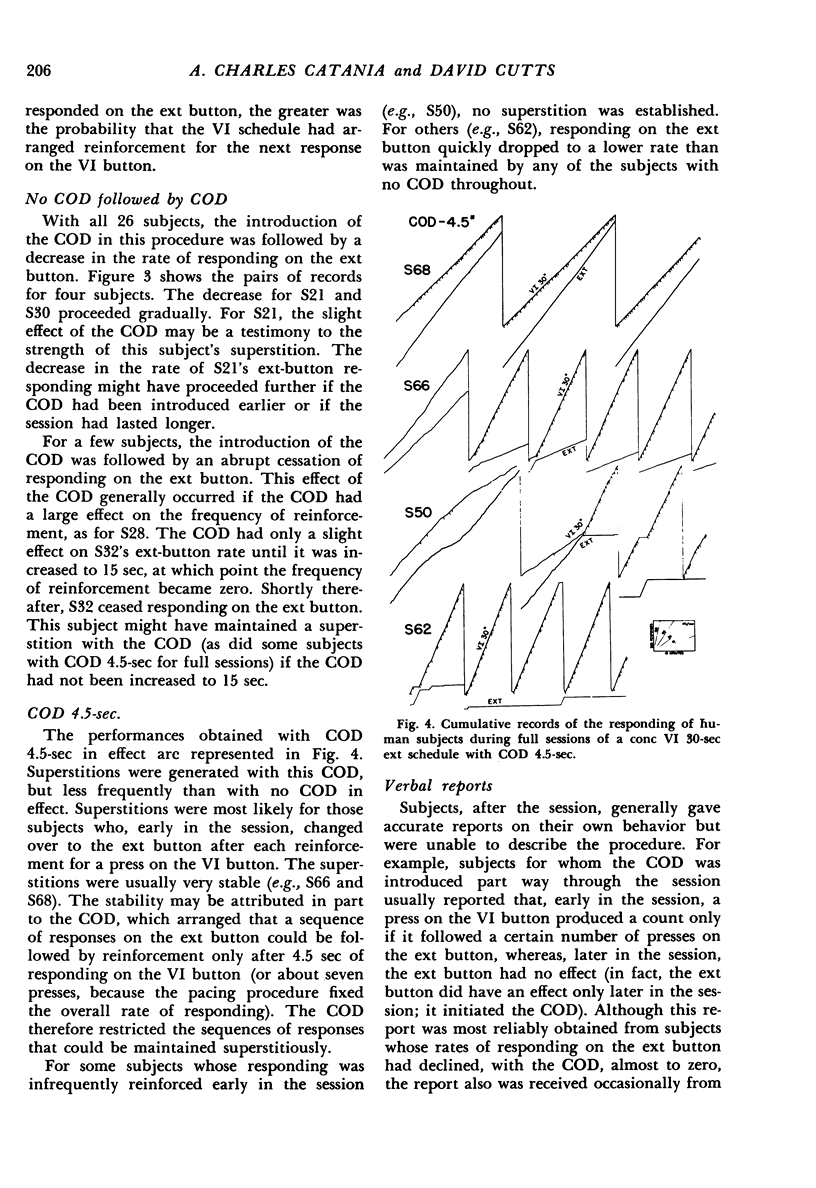Abstract
Superstitions were demonstrated with human subjects when presses on one button were reinforced on a VI 30-sec schedule while presses on a second were never reinforced. Superstitious responding, on the second button, was often maintained because presses on that button were frequently followed by reinforcement for a subsequent press on the first button. The introduction of a changeover delay (COD), which separated in time presses on the second button and subsequent reinforced presses on the first button, reduced or eliminated the superstitious responding of these subjects. Some complex superstitions were also demonstrated with other subjects for which the COD was in effect from the beginning of the session.
Full text
PDF





Selected References
These references are in PubMed. This may not be the complete list of references from this article.
- ANDERSON N. H., GRANT D. A. A test of a statistical learning theory model for two-choice behavior with double stimulus events. J Exp Psychol. 1957 Nov;54(5):305–317. doi: 10.1037/h0044347. [DOI] [PubMed] [Google Scholar]
- BRUNER A., REVUSKY S. H. Collateral behavior in humans. J Exp Anal Behav. 1961 Oct;4:349–350. doi: 10.1901/jeab.1961.4-349. [DOI] [PMC free article] [PubMed] [Google Scholar]
- CATANIA A. C. Independence of concurrent responding maintained by interval schedules of reinforcement. J Exp Anal Behav. 1962 Apr;5:175–184. doi: 10.1901/jeab.1962.5-175. [DOI] [PMC free article] [PubMed] [Google Scholar]
- FERSTER C. B. Intermittent reinforcement of matching to sample in the pigeon. J Exp Anal Behav. 1960 Jul;3:259–272. doi: 10.1901/jeab.1960.3-259. [DOI] [PMC free article] [PubMed] [Google Scholar]
- GARDNER R. A. Probability-learning with two and three choices. Am J Psychol. 1957 Jun;70(2):174–185. [PubMed] [Google Scholar]
- HERRNSTEIN R. J. Relative and absolute strength of response as a function of frequency of reinforcement. J Exp Anal Behav. 1961 Jul;4:267–272. doi: 10.1901/jeab.1961.4-267. [DOI] [PMC free article] [PubMed] [Google Scholar]
- HOLLAND J. G. Teaching machines: an application of principles from the laboratory. J Exp Anal Behav. 1960 Oct;3:275–287. doi: 10.1901/jeab.1960.3-275. [DOI] [PMC free article] [PubMed] [Google Scholar]


